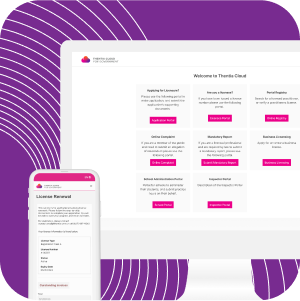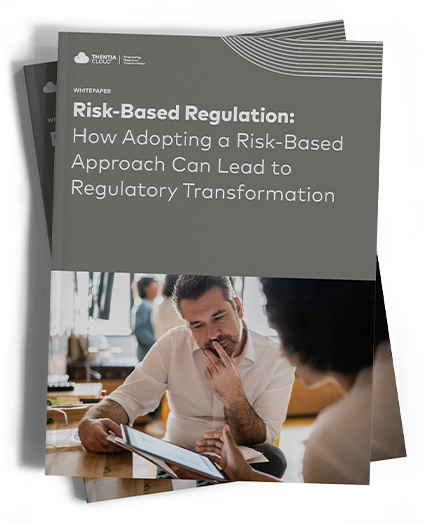For many, the word ‘regulator’ brings to mind large, complex agencies that work on behalf of the federal government to ensure private sector companies follow the rules, such as the Environmental Protection Agency (EPA) and the Food and Drug Administration (FDA). But this definition only captures part of the picture. While they may seem far removed, it’s easy to forget that regulators have an impact on everything in our daily lives, from the houses we live in and transit systems we commute on, to the professionals we seek out when we’re completing our taxes, receiving medical treatment, or even getting our hair cut (depending on where you live).
But the regulation of occupations doesn’t just impact consumers – it directly affects how millions of people do their jobs. Over the last 60 years, the percentage of Americans working in jobs requiring a professional license has grown from about 5% in the 1950s to around 25% today. In Canada, about 20% of jobs currently require a license.
To work in a regulated profession, practitioners must register with the appropriate regulatory bodies and interact with these organizations over the course of their careers. With occupational licensing impacting so many workers, it’s worth going back to basics and examining the fundamentals of what these regulatory bodies are and how they operate.
What are regulators and why do they exist?
Regulators are organizations that supervise industries, activities, objects, places, or occupations to ensure public safety and maintain public trust. Although regulators are created by and accountable to the government, they are independent agencies.
As experts in their fields, practitioners play important roles in the day-to-day operations of regulatory bodies and are often members of their boards and staff. However, it is important to note that regulators are very different from professional associations – they may influence the legislative processes that impact policy in their fields, but they do so in the interest of the public, not the professionals they govern.
Regulators exist to protect the health, safety, and well-being of the public. Imagine if we, as citizens, were responsible for determining that the family doctor we trust with our health is qualified to practice. Most of us simply don’t have the specialized knowledge needed to know for sure, and the consequences of being wrong could be fatal. Regulators solve this problem. They minimize public risk by ensuring that practitioners are competent, ethical, and accountable. Regulators are crucial for maintaining the integrity of a profession and establishing trust with the public, as citizens are assured that if a professional is licensed by a regulatory body, that person has been thoroughly vetted and deemed competent in their abilities.
How are regulators created? What kinds of occupations do they regulate?
Regulators are created through government legislation, typically at the state or provincial level. The legislation outlines the regulator’s mandate and establishes the set of rules (regulations) that the regulator will enforce.
Regulated professions are determined by the government. Generally, occupations that could pose a risk of bodily, financial, or legal harm to the public if they are practiced incompetently or unethically are regulated. However, when deciding if an occupation should be regulated, determining the level of risk is crucial. Decision-makers must strike a careful balance between protecting the public, and not imposing undue burdens on workers wishing to practice or on the public’s ability to access services.
What do regulators do?
Regulators are tasked with several important responsibilities, which can and often include:
- Setting standards for the core knowledge and skills needed to practice an occupation competently, as well as a code of ethics that practitioners must abide by (if applicable);
- Participating in the legislative process that determines the regulations governing the profession;
- Establishing accredited educational programs that teach core competencies and skills;
- Issuing new licenses to entrants and renewing the licenses of current practitioners at specified intervals;
- Evaluating whether professionals from outside jurisdictions are qualified to practice in the specific region being regulated without going through the usual vetting process;
- Checking that their licensed practitioners (also known as “licensees”) complete continuing education requirements to ensure they remain current on best practices in their fields;
- Providing an up-to-date register of licensees to the public;
- Investigating and resolving complaints made by the public or other practitioners against licensees; and
- Holding disciplinary hearings and imposing penalties on licensees if necessary.
How are regulators funded?
Regulators are not-for-profit organizations created by the government, but they are not usually funded by taxpayer dollars. They are most often self-sustaining entities that are funded by licensing, registration, and/or membership fees paid by practitioners.
Can regulators be abolished?
Governments can decide to change or eliminate regulators in accordance with evolving economic needs and priorities, or in response to public criticism or evidence that the regulator is not performing its mandate. Advocates of deregulation argue that excessive licensing requirements can restrict access to new jobs, hinder interstate mobility for workers, and increase costs for consumers.
While the complete deregulation of occupations is uncommon, it has been increasing in recent years. A recent report published by economists at Pennsylvania’s Lehigh University and Saint Francis University found that between 2015 and 2020, seven states successfully de-licensed 35 occupations. In comparison, their previous 2015 report uncovered a mere eight examples of de-licensing over the period spanning the previous 40 years. However, while deregulation has been gaining momentum, the researchers recognized that the number of deregulated occupations was still small in comparison to the total number of licensed occupations, and that in general, more occupations are licensed than de-licensed.
Regulation will continue to shape our world
Whatever the future holds for regulation reform, professional licensing has been with us for hundreds of years and will continue to have a significant impact on both workers and the public. Whether this overview was a refresher or your first introduction to occupational regulation, gaining a better understanding of what regulators do can help us appreciate the vital role they play in our everyday lives.
Ariel Visconti is a Content Writer at Thentia with extensive experience writing about academic research, government and politics, emerging technologies, and innovation.












